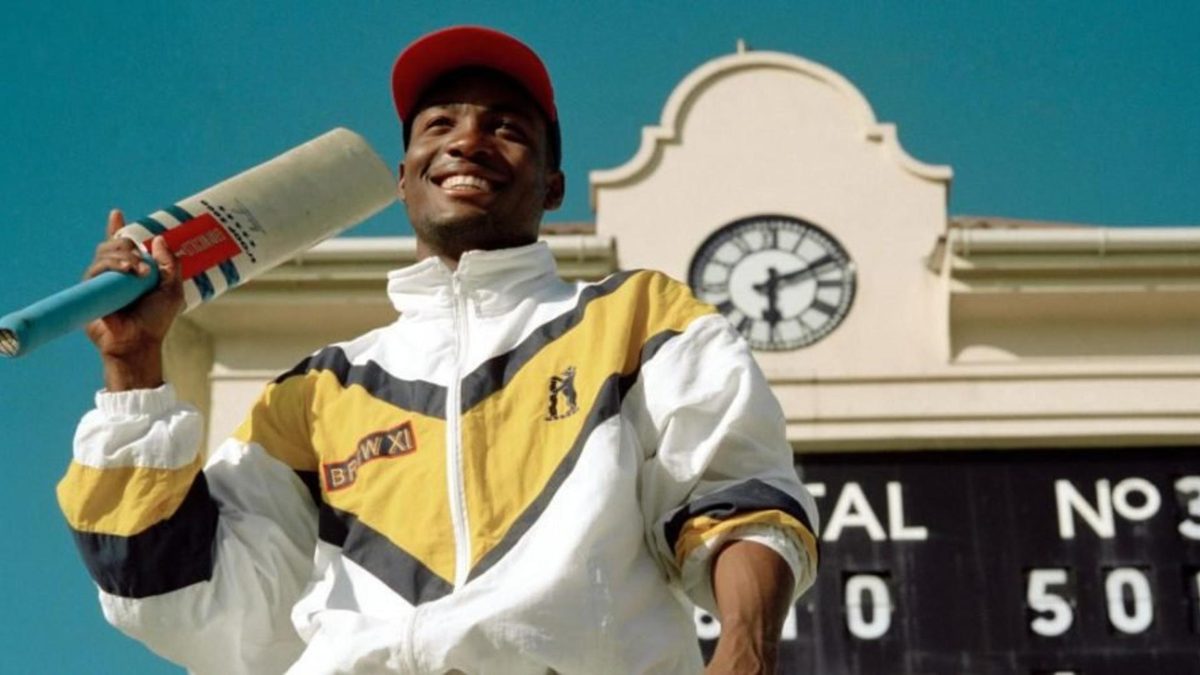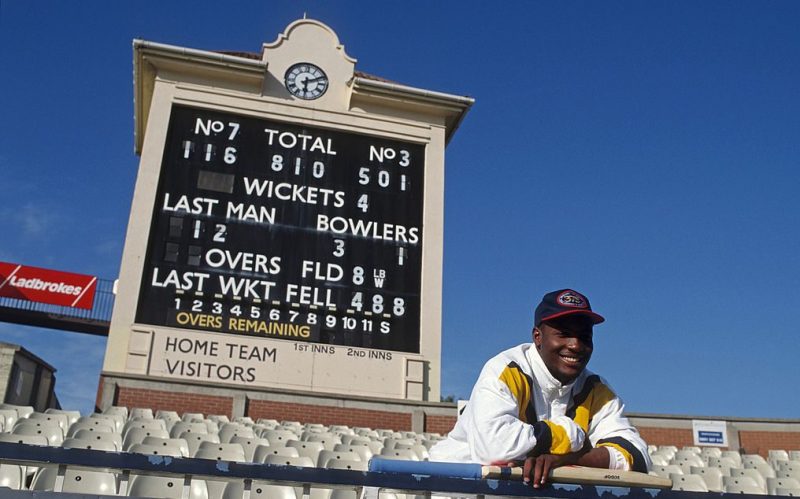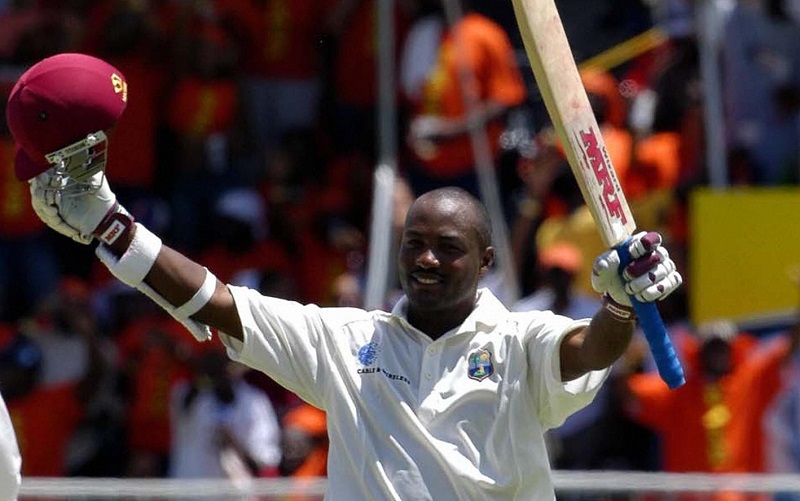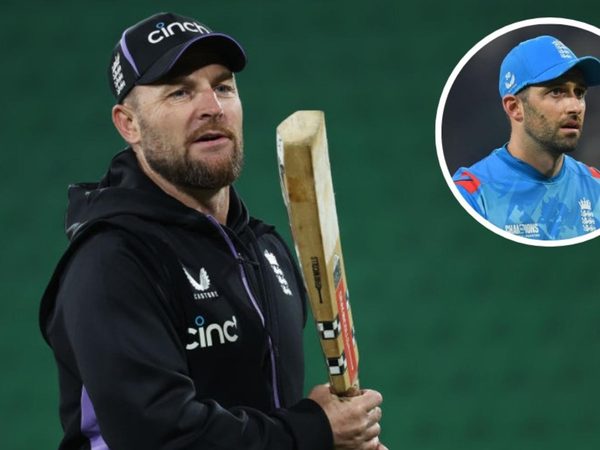
The unparalleled glut of batting records that fell to Brian Lara between April and June 1994 amazed the cricket world and gained global attention beyond the game’s narrow confines. It also prompted an outpouring of national pride in his native Trinidad & Tobago where he was showered with honours and gifts. Yet, while there was understandable joy, there was no real surprise among many of his countrymen at the left-hander’s achievement, simply the feeling that his inevitable date with destiny had arrived rather more suddenly than expected.
Brian Lara put up extraordinary performances for Warwickshire in the summer of 1994, which made him one of the easiest selections as a Wisden Cricketer of the Year in the history of the award.
Trinidadians craved the arrival of a batting superstar they, alone of all the territories that comprise West Indies cricket, had lacked; and Lara had long since provided unmistakable signs that he would fill the void. Even the most cock-eyed optimist could not have foreseen his virtually simultaneous eclipse of both Sir Garfield Sobers’s Test and Hanif Mohammad’s first-class records, but those who had followed his development from the time he first played organised cricket were never in any doubt that it was within the potential of his talent and ambition. There was even talk, not entirely prompted by the euphoria of the moment, that Lara himself would surpass his own standards by the time he was through.
Such confident assessments were based on solid evidence. As a stripling of a lad at Fatima College, in Port-of-Spain, Lara had reeled off seven centuries in a single season of the national inter-school competition at the age of 15. In the annual West Indies’ under-19 championships, he created new standards, averaging over 50 in his four years. In only his second first-class match, when he was not yet 19, he held firm for more than five hours to score 92 against Trinidad & Tobago’s sporting arch-rivals, Barbados, whose attack was led by Joel Garner and Malcolm Marshall.
Nor was the Trinidadian public alone in its early appraisal. Lara was made captain of the West Indies team to the Youth World Cup in Australia in 1988 and the West Indies B team to Zimbabwe the following year, ahead of older and more seasoned contenders. On his return, aged 20, he was appointed Trinidad & Tobago’s youngest ever captain.
If his advance to a permanent place in the West Indies Test team was inordinately delayed – he made his debut in Viv Richards’ absence in Pakistan in December 1990 and did not reappear until April 1992, against South Africa, after Richards had retired – it was through no lack of claim on his part. Even after he set a new, if temporary, record for the highest aggregate in the Red Stripe Cup, with 627 runs in the five matches, he was kept on hold.
Happy birthday, @BrianLara!
Here’s him unleashing a flourishing square drive on debut for Warwickshire, almost exactly 26 years ago at Edgbaston. pic.twitter.com/HwjYUMoFUT
— Wisden (@WisdenCricket) May 2, 2020
The simultaneous exits of Richards, Gordon Greenidge and Jeffrey Dujon after the 1991 tour of England finally made a place vacant and Lara immediately became the hub around which the reconstituted batting revolved. When West Indies faltered in the 1992 World Cup, he alone sparkled. Used as an opener, he announced his arrival on the world stage with 333 runs in the eight matches at an average of 47.57. More than half were accumulated in boundaries as he rattled on at a striking-rate of 81.61 per 100 balls.
In common with almost all other players, Lara was not satisfied to be judged on the artificiality of the shortened game and it was his 277 in Sydney in January 1993, in his fifth Test, that confirmed what Trinidadians had long since taken for granted, that here was the newest in the long line of great West Indian batsmen. One of his predecessors, now team cricket manager, Rohan Kanhai, called it “one of the greatest innings I have ever seen”. Its immediate value was that it inspired a revival of West Indian spirits that led to the conversion of a 1-0 series deficit at the time to an eventual 2-1 triumph; its long-term significance was that it established Lara as batting leader of a team still searching for a central figure in the absence of Richards.
It also reinforced Lara’s self-confidence, never in short supply but always essential in the make-up of a champion sportsman. While receiving his award as Trinidad & Tobago’s 1993 Sportsman of the Year, he was asked what might be his goals for 1994. “To get a few centuries, maybe a double, even a triple,” he replied. He proceeded to exceed even his own expectations.
Leading Trinidad & Tobago in the Red Stripe Cup, he reclaimed his old aggregate record with 715 runs in the five matches. His 180 against Jamaica was an astonishing innings, scored out of 219 while he was at the wicket; his partners contributed 21. It was merely a preview of what was to follow. Within five months, the memory even of that extraordinary performance had been eclipsed by his 375 in the Antigua Test against England and his unique sequence of seven centuries in eight innings, the next six for Warwickshire in the English County Championship, culminating with his unbeaten 501 against Durham.
 Brian Lara photographed with the scoreboard showing feat of 501* at Edgbaston in 1994
Brian Lara photographed with the scoreboard showing feat of 501* at Edgbaston in 1994
It was final confirmation for Trinidadians of what they had recognised for some time. According to Winston, one of his elder brothers, the Lara family knew he was something special even before he was ten. The second-youngest of seven sons and four daughters of Bunty and Pearl Lara, Brian Charles Lara was born on May 2, 1969 in Cantaro, a village in the verdant Santa Cruz Valley, half an hour’s drive from Port-of-Spain.
His father was superintendent at a government agricultural station. The boy’s fascination for, and mastery of, ball games was evident almost from the time he could walk. According to Winston, he would use a broomstick and a lime or a marble as a ball and knock up against the garage door. As he got older, he would defy his brothers to get him out with a tennis ball. It was typical West Indian rural life – except that Lara was fortunate in having a family that recognised his rare talent and did everything to encourage and develop it.
“My daughter’s name is Sydney simply because of that innings.”
One from the archives – Brian Lara revisits his top 10 moments in a chat with @Jo_Wisden.https://t.co/KxLldSt3GW
— Wisden (@WisdenCricket) April 19, 2020
When he was three, his father gave him a cut-down bat. When he was six, his father and his sister, Agnes, enrolled him at the Harvard Club coaching clinic in Port-of-Spain and would take him there and back every Sunday. Although he was good enough at soccer to gain selection to the national youth training squad – where he struck up a lasting friendship with Dwight Yorke, now with Aston Villa – his father insisted his future lay with cricket and influenced him to stick to it.
He was taken to major matches at the Queen’s Park Oval where he saw the leading players of the day in action. Roy Fredericks, the West Indies opener, was an early favourite for he was, after all, small, left-handed and a dasher. When his father died in 1988, Lara’s grief was deep and understandable. His guidance had extended beyond cricket. Dedicating his 375 to his memory, Lara said: “I had some bad influences in my time and, if my parents weren’t there to straighten me out, things might have gone haywire.”
 Lara went a notch higher in April 2004, scoring an unbeaten 400 against England in Antigua – the first and only quadruple in Tests
Lara went a notch higher in April 2004, scoring an unbeaten 400 against England in Antigua – the first and only quadruple in Tests
Another mentor was Joey Carew, the former West Indies opening batsman. As soon as Carew saw Lara play, in Fatima College junior teams captained by his sons, he took a keen interest, gaining him membership of Queen’s Park, the island’s strongest club team, and carefully, but not overbearingly, monitoring his development. On leaving Fatima, Lara was academically qualified enough to consider a career in accountancy but it was only a fleeting thought. Cricket, it was obvious, would be his profession.
But Lara is from the island renowned for its carnival, and he knows how to enjoy himself beyond the boundary. Like Sobers and so many other cricketers, he has become addicted to golf, which he plays right-handed and increasingly well, and is an avid fan of horseracing. His boyish good looks and easy-going manner, not to mention his fame and fortune, render him a vulnerable bachelor.
There is another more threatening consequence of his sudden success and stardom. It places on him an awesome responsibility that not all celebrated young sportsmen can properly handle. With satellite television now spanning the globe, Lara has become cricket’s first truly international megastar. Public expectations will be excessive, and the non-cricketing demands on him persistent.
There are pressures that the great players of the past – even Bradman, Sobers and Viv Richards – did not have to contend with to the same extent. Temperament, as much as talent, is now likely to dictate Brian Lara’s future.
Brian Lara played his last Test in 2006/07, finishing with 11,953 runs at 52.88, the most by anyone at the time. In addition, he scored 10,405 ODI runs from 299 games at 40.48.








